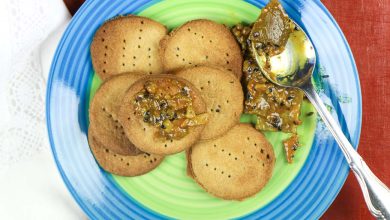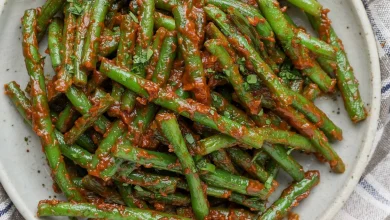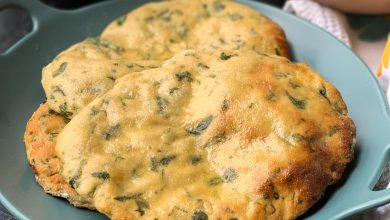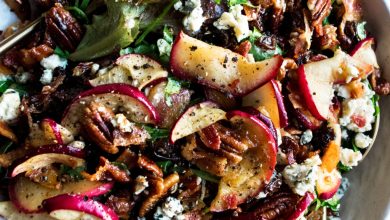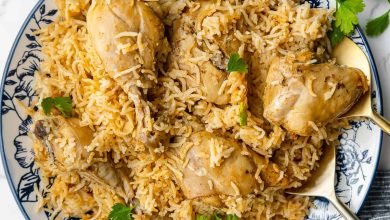Whole Wheat Onion Kulcha with Mint & Coriander Filling
Introduction
The Whole Wheat Onion Stuffed Kulcha represents a perfect fusion of tradition and health consciousness, embodying the essence of flavorful Indian street food while emphasizing nutritional benefits. This recipe, sourced from the vibrant culinary landscape of Northern India, offers an elevated take on a beloved bread by incorporating hearty whole wheat flour, ensuring a wholesome experience without sacrificing taste or texture. Whether you’re a seasoned home cook or a novice eager to explore authentic Indian cuisine, this kulcha promises to deliver a delightful combination of crispy exterior, soft interior, and aromatic stuffing that elevates any meal.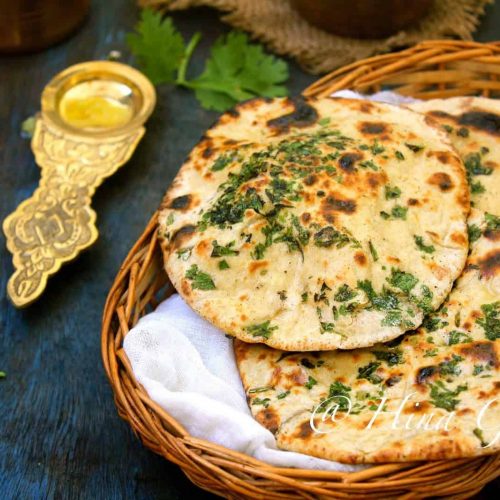
In its essence, the stuffed kulcha is a versatile bread that pairs beautifully with various accompaniments like spicy chole, tangy pickles, or cooling raita. Its preparation on the stovetop makes it accessible for all, sidestepping the need for specialized equipment like a tandoor oven. The technique involves fermenting the dough for softness, preparing a fragrant onion and herb stuffing, and skillfully shaping and cooking the kulchas to achieve a perfect balance of crunch and fluffiness. The use of garlic, coriander, and mint in the stuffing lends a fresh, vibrant aroma, making each bite a sensory delight.
This recipe is a testament to the beauty of simple ingredients transformed through technique and tradition, resulting in a nourishing, satisfying, and utterly delicious bread. Whether you serve it as part of a festive feast or a casual family dinner, these whole wheat onion stuffed kulchas are sure to impress and satisfy.
Time
Preparation Time: 150 minutes (2 hours and 30 minutes)
Cooking Time: 40 minutes
Total Time: 190 minutes (Approximately 3 hours and 10 minutes)
Needed Equipment
Essential Kitchen Tools
- Large mixing bowls
- Sifter or fine sieve
- Measuring cups and spoons
- Wooden spoon or dough hook (if using stand mixer)
- Clean damp cloth or plastic wrap
- Food processor or sharp chopping knife and chopping board
- Rolling pin
- Small bowl for stuffing
- Iron skillet, griddle, or heavy-bottomed frying pan
- Tongs or spatula
- Cooling rack (optional)
- Brush for oil or butter (optional)
Optional Equipment for Enhanced Flavor
- Cast iron tandoor or clay oven (for authentic tandoori flavor)
- Bread maker or stand mixer with dough hook (for easier kneading)
- Silicone baking mat or parchment paper (for rolling and handling)
Tags
- Vegetarian
- Whole Wheat
- Street Food
- Indian Cuisine
- Stuffed Bread
- Healthy
- Quick & Easy
- Vegetarian
- Homemade
Serving Size
Typically, this recipe yields approximately 8-10 medium-sized stuffed kulchas, suitable for 4-5 servings depending on appetite and accompanying dishes.
Difficulty Level
Intermediate. The process involves dough fermentation, stuffing preparation, shaping, and controlled cooking. While manageable for home cooks familiar with dough handling, it requires patience and attention to detail, especially during the rolling and cooking stages.
Allergen Information
- Gluten: Present in whole wheat flour.
- Garlic: Used in both dough and stuffing, may cause reactions for sensitive individuals.
- Herbs: Fresh coriander and mint, generally safe but watch for allergies.
Note: This recipe is free from dairy, eggs, and nuts, making it suitable for many dietary restrictions, but always check individual allergies.
Dietary Preference
- Vegetarian
- Vegan (if skipped butter/oil for cooking)
- Whole Wheat
- Healthy & Nutritious
Course
Main Course / Bread
Cuisine
North Indian / Indian Street Food
Ingredients
In Table Format for Clarity
| Category | Ingredients | Quantity |
|---|---|---|
| Dough | Whole Wheat Flour | 4 cups (480 grams) |
| Active Dry Yeast | 1 tablespoon (about 10 grams) | |
| Sugar | 1 teaspoon (4 grams) | |
| Garlic (finely chopped) | 2 cloves (about 6 grams) | |
| Salt | To taste (about 1 teaspoon or 5 grams) | |
| Lukewarm Water | As needed (approximately 1 to 1.5 cups) | |
| Stuffing | Onion | 1 large (about 150 grams) |
| Coriander (Dhania) Leaves | 1 small bunch (about 20 grams) | |
| Mint Leaves (Pudina) | 5-6 leaves (about 10 grams) | |
| Garlic (finely chopped) | 6 cloves (about 18 grams) | |
| Red Chilli Powder | ½ teaspoon (1.5 grams) | |
| Turmeric Powder (Haldi) | ½ teaspoon (1.5 grams) |
Instructions
Preparing the Kulcha Dough
Sifting the Flour and Combining Dry Ingredients
Start by placing a large, clean mixing bowl on your countertop or in your kitchen workspace. Using a fine sieve or sifter, pour in the whole wheat flour, ensuring it is aerated and free of lumps. Sifting the flour helps achieve a light, airy dough, which is crucial for soft, fluffy bread. Add the salt directly to the sifted flour, distributing it evenly.
Next, incorporate the active dry yeast and sugar into the flour mixture. The yeast acts as a leavening agent, creating the fermentation process that forms the basis for soft, well-risen kulchas. The sugar serves as a food source for the yeast, activating it more rapidly. Mix these dry ingredients thoroughly with a spoon or whisk to ensure even distribution of yeast and sugar.
Adding Aromatics and Liquids
Proceed to add finely chopped garlic into the flour mixture. The garlic infuses the dough with a subtle, savory aroma, enhancing the overall flavor profile. If you prefer, garlic powder can be substituted, but fresh garlic offers a more vibrant taste.
Gradually pour in lukewarm water, about 1/4 cup at a time, mixing with your hand or a spoon. The temperature of the water is critical—warm enough to activate the yeast (around 100-110°F or 37-43°C) but not hot enough to kill it. As you add water, knead the mixture into a soft, pliable dough. If the mixture feels too sticky, sprinkle in a little more flour; if too dry, add a teaspoon of water at a time until the dough achieves a smooth, elastic consistency.
Kneading and Fermentation
Transfer the dough onto a lightly floured surface and knead vigorously for at least 8-10 minutes. Proper kneading develops gluten strands, ensuring the dough is elastic and can trap gases during fermentation, leading to soft kulchas. The dough should be slightly tacky but not sticky. Cover the bowl with a damp cloth or plastic wrap, and place it in a warm, draft-free corner of your kitchen to rise.
Allow the dough to ferment for approximately 1.5 to 2 hours. During this period, it will double in size, develop bubbles, and become soft and airy. For best results, maintain a consistent warm temperature (around 75-80°F or 24-27°C). If your kitchen is cool, consider placing the dough in an oven with just the light on or near a warm radiator.
Preparing the Onion and Herb Stuffing
Chopping the Vegetables
While the dough is fermenting, prepare the stuffing. Peel the onion and chop it finely using a sharp knife or a food processor. Finely chopping ensures the stuffing integrates smoothly into the kulcha, providing bursts of flavor in every bite. Similarly, rinse the coriander and mint leaves thoroughly under cold water, then chop or tear the leaves into small pieces. Using a food processor can make quick work of this step, but manual chopping ensures more control over the texture.
Seasoning the Stuffing
Combine the chopped onion, coriander, mint, and garlic in a small mixing bowl. Add salt, red chilli powder, and turmeric powder. Mix thoroughly to distribute the spices evenly. The onion’s natural moisture will help bind the stuffing, but if it feels too dry, a few drops of water or a splash of lemon juice can be added to enhance flavor and moisture. Set aside the seasoned stuffing for use during assembly.
Assembling the Whole Wheat Onion Kulchas
Punching Down the Dough
After fermentation, gently punch down the dough to release excess gases. This step prevents the kulchas from becoming overly airy or collapsing during cooking. Divide the dough into equal portions—about the size of a golf ball for each kulcha.
Shaping and Filling
Take one dough ball and flatten it slightly with your palm. Lightly dust your rolling surface and rolling pin with flour to prevent sticking. Roll out the dough into a small circle, approximately 2 inches in diameter. Place a tablespoon of the prepared onion stuffing in the center. Carefully gather the edges of the dough and pinch them together to seal the stuffing inside. Gently flatten and reshape the stuffed ball into a smooth, round patty.
Rolling the Stuffed Kulcha
Lightly dust the stuffed ball with flour and gently roll it out into a circle about 6-8 inches in diameter. Be cautious to avoid tearing the dough or spilling the filling. If the dough resists rolling or the stuffing begins to ooze out, carefully reshape and re-roll, ensuring the filling remains enclosed.
Cooking the Kulchas
Preheating the Skillet
Heat a heavy-bottomed skillet or griddle over medium heat. Test the heat by sprinkling a few drops of water; if they sizzle and evaporate quickly, the skillet is ready.
Cooking Process
Place the rolled-out kulcha onto the hot skillet. Cook for 1-2 minutes until you see golden spots forming on the underside. Flip the kulcha using tongs or a spatula to cook the other side. When the kulcha starts to puff up, carefully flip it over and cook briefly over direct heat (if using a gas stove with open flame) to encourage puffing and crispness.
Repeat the process, flipping and puffing, until both sides are evenly golden and crisp. For enhanced flavor, you can brush the kulcha with ghee or butter during or after cooking, if desired. Serve hot for the best texture and aroma.
Preparation Tips
- Water Temperature: Always use lukewarm water to activate the yeast effectively.
- Dough Resting: Adequate fermentation is key for soft kulchas. Do not skip this step.
- Stuffing Consistency: Ensure the onion mixture is finely chopped and seasoned well. Adding fresh herbs enhances aroma and flavor.
- Rolling Technique: Use gentle, even pressure to prevent tearing. Dust with flour sparingly to avoid dry spots.
- Cooking Heat: Maintain a steady medium heat to prevent burning while allowing proper puffing and crisping.
Nutritional Information
| Nutrient | Per Serving (Approximate) |
|---|---|
| Calories | 180-220 kcal |
| Protein | 6-8 grams |
| Carbohydrates | 35-40 grams |
| Dietary Fiber | 4-6 grams |
| Fat | 2-4 grams |
| Sodium | 200-300 mg |
Tips and Tricks
- Fermentation: For a more tender kulcha, extend fermentation time or keep the dough in a warm place.
- Stuffing Variations: Add finely chopped green chilies, grated ginger, or a sprinkle of chaat masala for variation.
- Flavor Enhancements: Incorporate a pinch of carom seeds (ajwain) in the dough for added aroma.
- Cooking Method: For a smoky flavor, cook directly over an open flame or grill after initial pan-cooking.
- Storage: Keep cooked kulchas warm in a covered container or wrapped in a clean towel to retain softness.
Add-ons and Variations
- Stuff with other vegetables like grated carrots, chopped spinach, or paneer for different flavor profiles.
- Mix in spices like cumin seeds, garam masala, or amchur (dry mango powder) into the stuffing for an extra punch.
- Brush with butter or ghee after cooking for enhanced richness and flavor.
- Serve with various dips and condiments like tangy mango pickle, green chutney, or yogurt-based raita.
Side Dishes
- Chole Pindi: Spiced chickpea curry that complements the kulchas perfectly.
- Raita: Cooling yogurt mixed with cucumber, mint, or boondi provides contrast and balance.
- Pickles: Mango or lemon pickles add a tangy, spicy kick.
- Salads: Fresh cucumber, onion, and tomato salad for a refreshing side.
Improvements and Variations
- Use whole wheat flour blended with a small percentage of all-purpose flour for a softer texture.
- Add a teaspoon of yogurt or sourdough starter to enhance fermentation and flavor.
- Experiment with different stuffing ingredients like cheese, spinach, or cooked lentils for variety.
- Use a cast iron skillet or tandoor for authentic smoky flavor and crispiness.
Save and Store
Leftover kulchas can be stored in an airtight container at room temperature for up to 24 hours. For longer storage, wrap them in foil or plastic wrap and refrigerate for up to 3 days. To reheat, warm in a hot skillet or microwave wrapped in a damp paper towel to retain moisture. For best results, reheat until steaming hot and serve immediately.
FAQ
Can I make this recipe vegan?
Yes. Skip any butter or ghee used for brushing and prepare the dough with water only. You can also substitute garlic and herbs as desired.
Can I add other vegetables in the stuffing?
Absolutely. Finely grated carrots, chopped spinach, cooked potatoes, or even paneer can be incorporated for different flavors and textures.
Can I bake these kulchas instead of pan-frying?
Yes. Preheat a conventional oven to 400°F (200°C). Place the stuffed kulchas on a baking sheet lined with parchment paper and bake for 15-20 minutes until golden. For a more authentic touch, brush with ghee before baking.
What if my dough doesn’t rise?
Ensure the yeast is active and the water temperature isn’t too hot or cold. Also, verify that the dough is kept in a warm environment during fermentation. If still unsuccessful, try adding a little more yeast or starting with fresh yeast.
Conclusion
The Whole Wheat Onion Stuffed Kulcha is a wholesome, flavorful bread that beautifully balances nutrition with indulgence. Its preparation process, though requiring some patience, is straightforward and rewarding, resulting in a soft, puffy, and aromatic bread that elevates any meal. Perfectly suited for vegetarians and health-conscious eaters alike, this recipe exemplifies how traditional Indian street food can be adapted for home kitchens with accessible ingredients and techniques. Whether paired with spicy chole, cooling raita, or tangy pickles, these kulchas bring the authentic flavors of North India to your dining table. Embrace the journey of making these delicious stuffed breads, and enjoy the sensory pleasures of freshly cooked, homemade Indian cuisine.
For more delicious recipes and culinary tips, visit Love With Recipes.
References
- “Indian Bread Recipes,” by Ritu Dalmia, 2015.
- “The Ultimate Indian Cookbook,” by Anjali Pathak, 2018.


